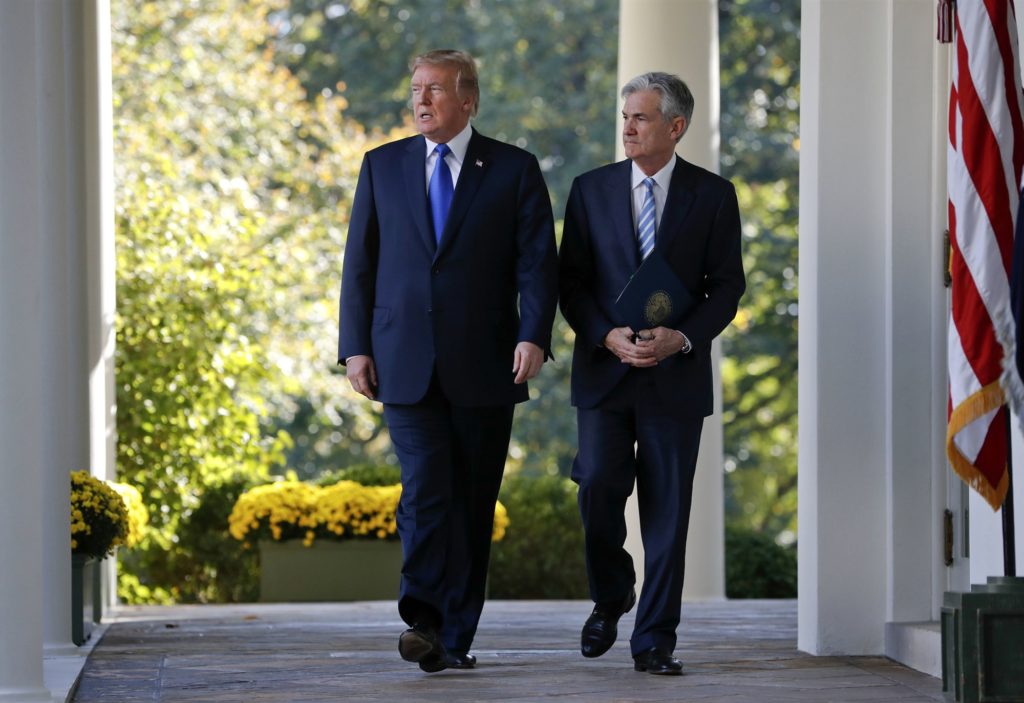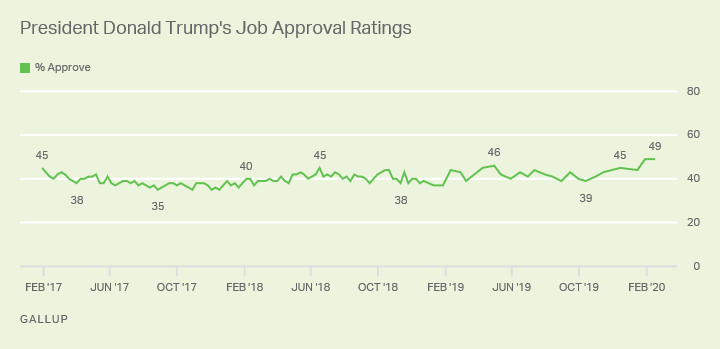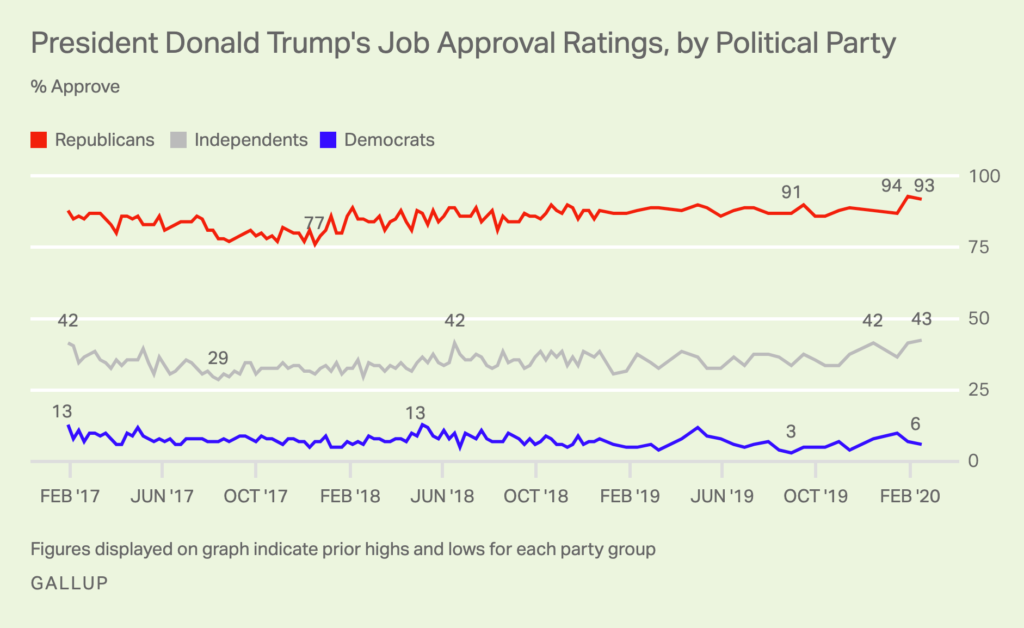
[President Donald Trump walks with Jerome Powell before announcing him as nominee for chair of the Federal Reserve at the White House on Nov. 2, 2017.Pablo Martinez Monsivais / AP file]
President Trump recently took to twitter to tout low unemployment rates and high job creation numbers.
He also claimed that the current US economy is the greatest in American history. (Fact check: it is not). For 2019, the data shows an annual average growth of 2.3%, ending the year at 2.1% for the fourth quarter. This is significantly less than the 5.5% peak achieved in the second quarter of 2014, and if we look further back, in 1950s and 1960s the GDP growth was even higher.
But nevertheless, the economy has been doing very well under President Trump. Let us take a look at some recent data:
225,000 jobs were created in January 2020. Well above the expected 158,000.
The unemployment rate is at 3.6%
Average hourly earnings had a solid 2% increase.
Job gains for two previous months (December and November, 2019) were upward as well. November’s job creation number was 261,000. December’s number was 147,000. Now the three-month average is at 211,000 jobs.
Sectors that were driving that job growth in January were construction, health care industry, and leisure ad hospitality industry. The labor force participation rate rose in January.
63% of U.S. adults rate “current economic conditions” as either excellent or good. Just 9% rate them as not good.
During 2016 election, skeptic economists and pundits used to warn everyone about destruction of stock markets and the whole economy if Trump gets elected. A prominent one of them is Paul Krugman, a fierce Trump critic, and a Nobel Prize winner in Economics who repeatedly claimed that Trump would bring global recession if elected. He also as recently as April of 2019 claimed it is unlikely that only one factor will cause the next financial downturn and it will be a “Smörgåsbord* recession“.
Claims that some now consider as only hyperbole and complete exaggeration, while some others are convinced these predictions will eventually come true, even though there are only less than 9 months left of Trump’s presidency and the dramatic economic disaster we were warned about has not occurred.
Keeping them honest, since 1988, there has been total of 469 economic downturns in the world, and only 4 of them were predicted at least a year in advance by economists in International Monetary Fund. In other words, the economists are terrible at predicting recessions!
(*Smörgåsbord: a Swedish word meaning a wide range of something; a variety)
Some point out that President Trump inherited the positive economy from President Obama; after he signed the “Recovery Act” in 2009, there has been 11 years of uninterrupted economic growth. However, one must not miss the fact that Trump had some impacts on the economy after 3 years as well. Such as passing Tax Cuts bill in 2017, and one of most important decisions of his was appointing Jerome Powell as the Chair of Federal Reserve. Even though Trump couldn’t resist his intuitive temptation and kept criticizing Powell publicly on twitter from time to time, Jerome Powell has shown that he is not one to succumb to political pressure or be influenced by what the president desires, and maintained the independence of the Fed intact.
There were reports of Trump being frustrated with Chairman Powell and floated the idea of firing him after The Fed raised the interest rates in December 2018 for the fourth time that year, a move that was severely criticized by president and fiscal hawks.
Even though presidents appoint the Fed’s board of governors, including the Chairman, the central bank is independent and derives its authority from the Congress, which created the System in 1913 with the enactment of the Federal Reserve Act. The Fed recently decided to keep the rates unchanged for the final months of 2019 and early 2020.
Almost all economists argue that if Trump had not started a “Trade War”, the economy would have been even stronger today. He went after China by implementing tariffs on their imports to the U.S. and as a retaliation, Chinese government imposed their own tariffs on American agriculture, which negatively affected U.S. farmers so severely to a point that the administration had to pay billions of dollars in bailout as aid to farmers.
Ohio State University Farm Income Enhancement Chair Ani Katchova said that even with help from the federal government, U.S. farm profits are only two-thirds of the inflation-adjusted $136.6 billion dollars that farmers gained in 2013, the best year in recent memory.
According to Montana State University economist Eric Belasco, “Most farmers benefited from the bailout, but because bailout money is distributed based on acreage and not farmers’ need, about half of the money (47 percent) went to the largest 10 percent of operations.”
Despite all of this, a recent Gallup poll shows Trump’s approval rating at high level of 49%, an increase from previous polls.

For more context, president Obama’s approval rating in February of 2012, was only 48% and he went on to beat Mitt Romney and got re-elected. Trump is now polling 1% higher.

Americans’ satisfactions is at a 15-year high. They are increasingly positive about the state of the nation and economy, the percentage of people who are satisfied with the way things are going in the U.S. is 45% now, the highest since February 2005.
Historically, incumbent presidents with good economies win re-elections. Democrats running against Trump need to acknowledge that fact if they want to have a chance of winning. As goes a famous phrase coined by political consultant James Carville, when he was the strategist for Bill Clinton’s presidential campaign in 1992 and wanted to emphasize the importance of economics to campaign staffers: “It’s the economy, stupid”!
Maryam Rahmani
